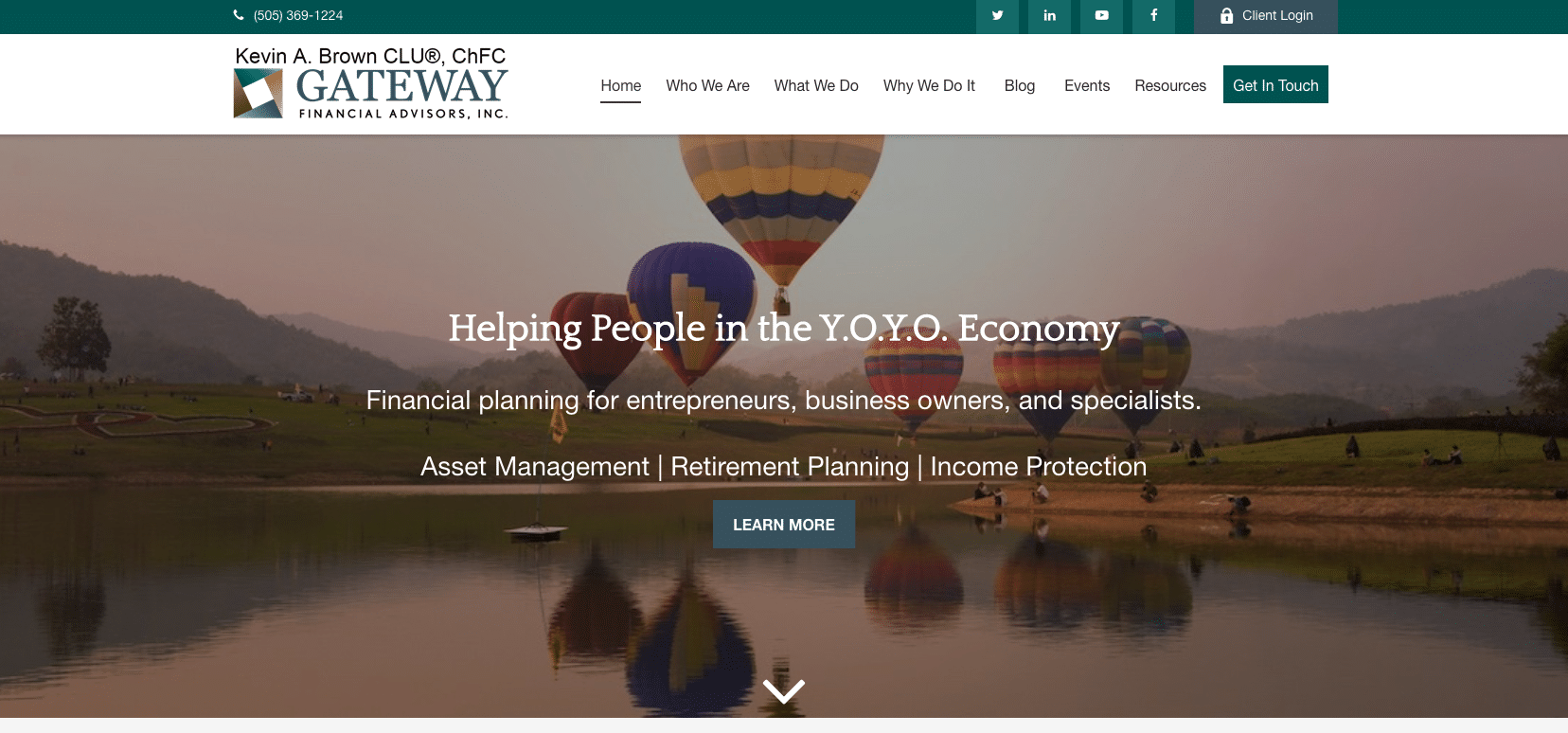Interested in learning more about the Advisor I/O platform?
Leave us your info and we'll send you more details
Blog Detail
What We’ve Learned from Auditing 50+ Financial Advisor Websites in the Last Year
by Advisor I/O
One billion. There are over one billion websites in the world right now.
The internet is a vast, complex experience. One where you can be found easily, and repeatedly, but also one that if you don’t have your ducks in a row, you can exist only within your own echo chamber.
Over the last year, we’ve audited over 50+ financial advisor websites. This ranges from advisors who are part of billion-dollar shops, to advisors who launched their new RIA within the last two months. Those who have built custom websites, to those who’ve used out-of-the-box platforms.
What’s the biggest thing we’ve learned?
That too few advisors are taking advantage of the ways your website can act as a second business development arm. And too many advisors are ignoring baseline optimizations that can make a huge difference to getting your practice seen.
But it’s not on the advisor to understand what does and doesn’t need to be optimized on a website. In fact, it’s the marketing industry’s fault. The industry has sold the advisor a bill of goods.
Whether advisors don’t have the ability to make their own updates, or they haven’t been properly set up on Google, time and time again we’ve seen that marketing agencies have built and deployed less-than-functional websites for financial advisors.
This is why auditing your website is the second thing we do for Advisor I/O members. Because in 2021, having a site that educates, nurtures, and converts prospects is table stakes. And your business development shouldn’t be hindered by your digital properties.
These digital properties should be a competitive advantage.
In this piece, we’ll dive into ways you can optimize your site, with some examples.
1. Audit Your Site Structure
By structure, we mean navigation and page structure. Your website structure is important for two primary reasons:
- It creates a better user experience for those who are coming to your site for the first or second time. If things are hard to find, your audience is more likely to give up and move onto another option.
- Google loves a properly structured website, because a properly structured website tells Google what is most important.
So, when auditing your website structure, ask yourself three primary questions.
- Are the most important things the easiest to find?
- Are you using investor-friendly language or are you using inside baseball terms?
- Is your site navigation bloated with items?
Take Chancellor’s website shown below. Here’s where they win:
- Both have a clear flow in navigation with not too many navigation items (under Advisor I/O primary items is ideal).
- Since most visitors are new, they flow the navigation items left to right so what is most important to a new visitor trying to learn more is prioritized.
- They keep the navigations simple and use language that can be understood by an investor looking for an advisor.
- They leverage sub-navigation to organize their items properly
- They round out their navigation with a call-to-action button that capitalizes on visitor interest – no burying it in sub navigation.

2. Get Your SEO Foundation in Order
This is a biggie. Why? So many sites are missing the low hanging fruit SEO can provide. No I’m not talking about ranking for “retirement income” because good luck. I’m talking about ranking for location-oriented keywords and ranking for terms and phrases that may be longer-tail, meaning they have less volume, and more specificity.
Steps to Take in SEO:
- Do your keyword research – you can use UberSuggest, Keyword Finder, Google AdWords, etc. There are hundreds of tools out there, but essentially you want to focus your searches round a few key areas:
- Branded terms: Are you ranking for terms on your practice name and variations of it?
- Local terms: are you ranking for terms on local search (i.e. “financial advisor plug in your city here”).
- Topical terms: understand if/how you are ranking for terms that you want to be known for. You want these terms to be further down-funnel, because trying to rank against terms like “retirement income” will end up being very difficult with all the big players ranking for those terms.
- Update your meta descriptions – these are still important despite some of the advice out there. They are what google crawls as your “page description.” Each page should have a unique meta description explaining what someone can expect on the page. Also, on your core pages (i.e. your home page), integrate local and branded terms.
- Set up internal cross linking between pages – if you’re writing a new blog post or developing a new page, crosslinking is critical. On a single piece of content, aim to have 2-3 internal cross links to other pages within the content. This could be to other core pages or blog pages.
- Audit the messaging on your primary pages – do you speak directly to the audience you’re going after? Our example below for Gateway shows that they’re focused on a very targeted demographic and are explicit about who they go after and what they do. Also, they’re based in Albuquerque, and their imagery reflects that.

3. Get Your Pipes Connected
Forms. Google. Pixels: The three headed monster for proper marketing piping.
- Forms can make or break your digital experience. They’re the difference between being another business card or being an ecosystem of content to drive people to the next step. Ensuring your forms are properly connected will allow you to build flows off of any engagement and allow you to automate your marketing when it makes sense. If you don’t have an email system set up, MailChimp and ConverKit can be great systems that connect in easily to your website. Ask your compliance team if there is an already approved system.
- We’ve seen so many advisors’ websites where they aren’t set up on Google Analytics, Search Console, or Tag Manager. Why? Most likely whoever set up their sites completely ignored this crucial facet. The good news is that they’re fairly easy to get set up on. Take a few hours to make sure everything is properly connected and set up. One tip – you need to have a Gmail account to get these created, so set that up before kicking off these projects.
- Pixels mean your site can track and retarget people appropriately. Without these, your “marketing funnel” will be at a major disadvantage.
4. Set up Passive and Active Conversion Points
Passive points of conversion = guides, webinar replays, newsletters.
Active points of conversion = schedule an assessment, review, or book a meeting.
Both are needed for your website. For example, you’ll see on Advisor I/O’s website, we have four possible points of conversion:
- Schedule demo (active)
- Download our SEO guide (passive)
- Contact us (active)
- Discuss a specific membership pricing (active)
- Exit intent pop-up (active)
None of our conversion points are “in your face.” They allow the visitor to make their own selection within the context of their visit. They allow the user to navigate their own path, without us forcing them down a lead page or landing page.
5. Make Sure You’re Represented Appropriately Off-Site
Jump to Google and Google two things:
- Your practice name
- “Financial advisor in XXX location”
What came up? More specifically, if/how were you represented on these two search queries. If you’re misrepresented on channels (i.e. Yelp), take ownership over these channels. With the changes to the SEC advertising rule, you’re going to be able to leverage Google Reviews more in your marketing (check with your own compliance please) and if you don’t have your ducks in a row on your pages, you’ll lose on Google-led traffic to your site.
Bottom line is that optimizing your website can feel overwhelming and look like a tremendous task but getting your website in order now can greatly improve your digital programs in the short and long term. Need help getting things optimized? We’re here – shoot us a note at [email protected]




